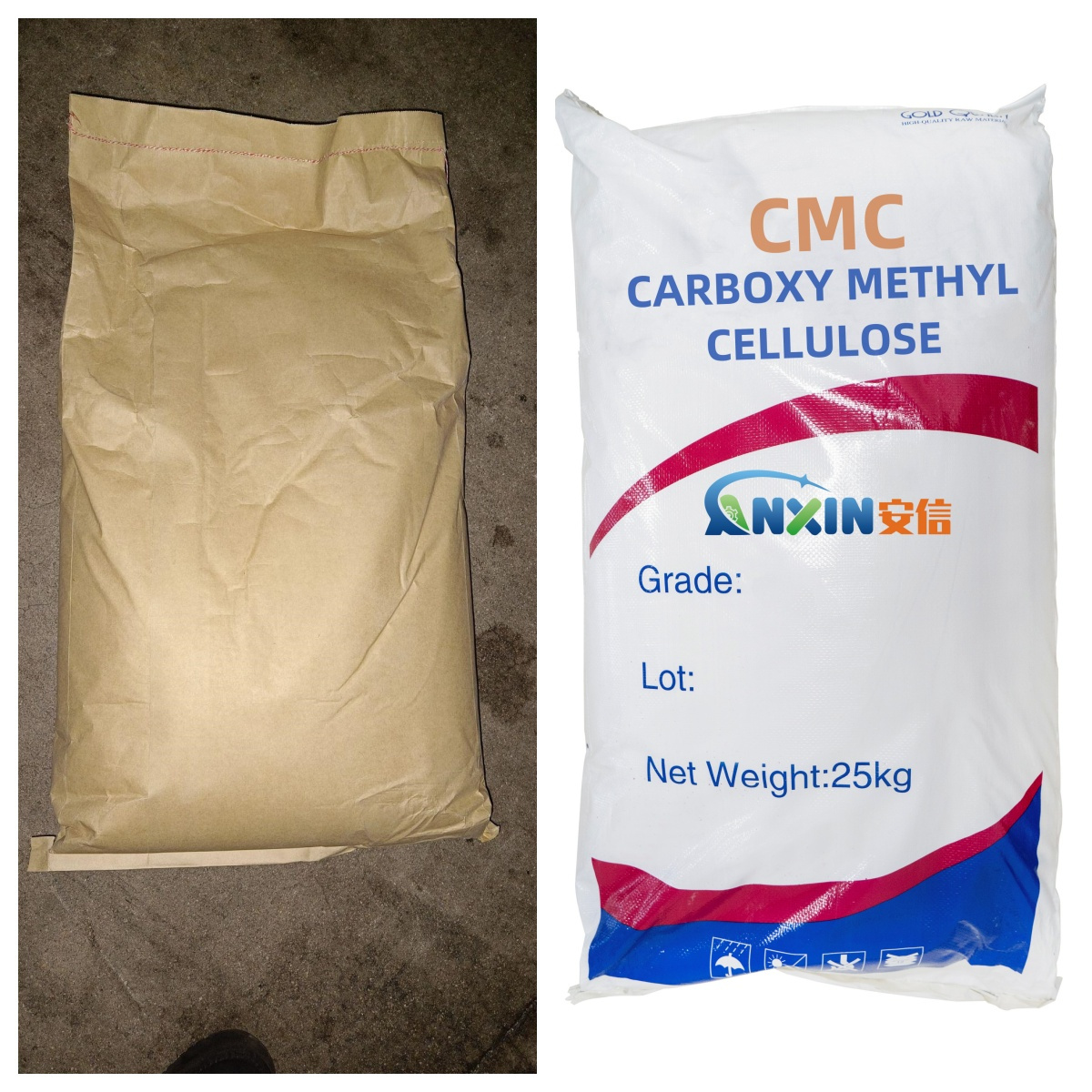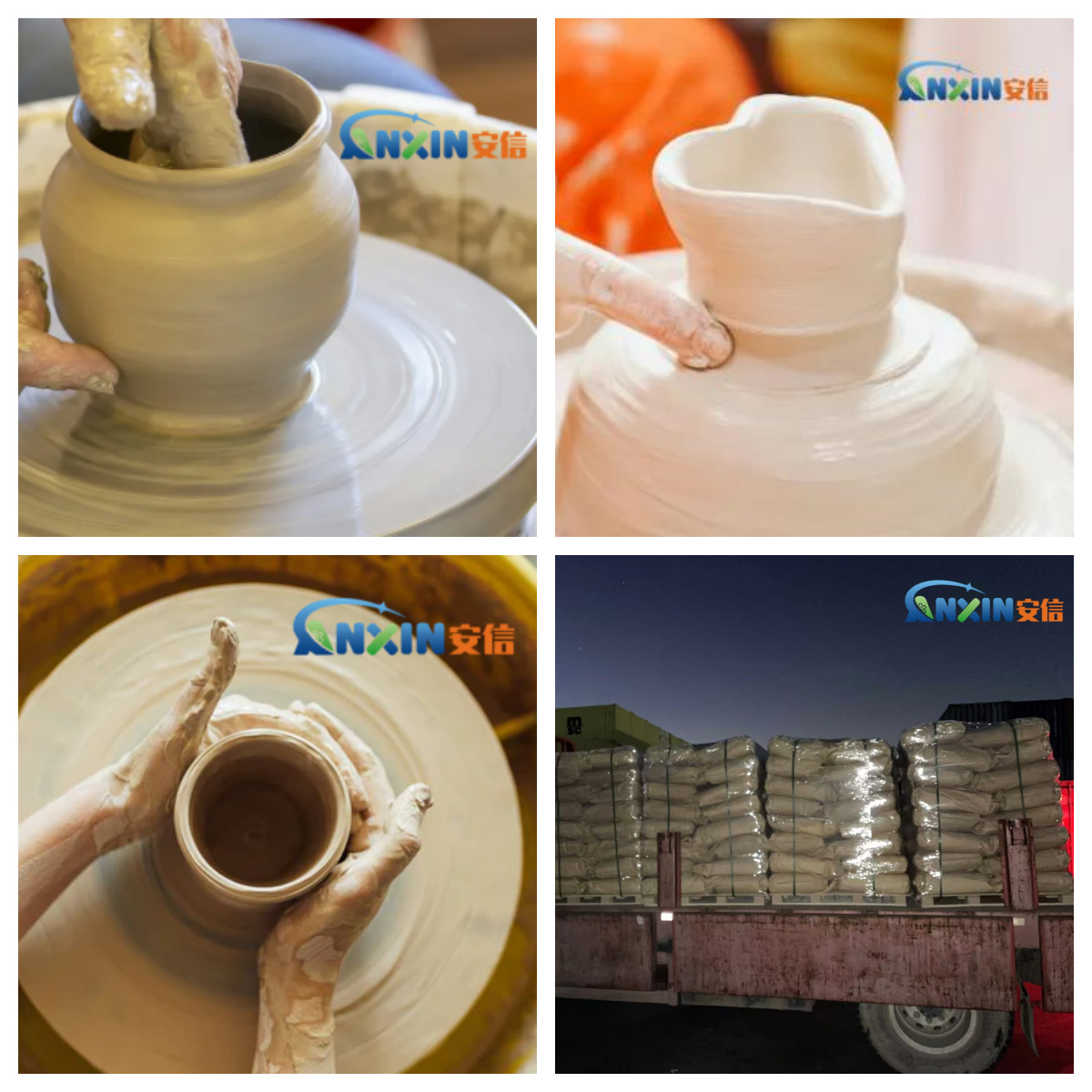In the ceramic industry, carboxymethyl cellulose(CMC) , a water-soluble polymer compound derived from natural cellulose. CMC has become an indispensable additive in the production process of ceramic green bodies and glazes due to its excellent thickening, bonding, water retention, suspension and rheological adjustment properties. It improves the surface quality and mechanical strength of ceramic products by improving the rheological properties of ceramic slurry and green body forming properties, and has significant economic and technical value.
1. Basic properties of CMC
Carboxymethyl cellulose is an anionic water-soluble polymer made by introducing carboxymethyl (–CH₂–COOH) groups into natural cellulose through etherification reaction. Its main properties include:
Good solubility: It can be quickly dissolved in both cold and hot water to form a transparent high-viscosity colloidal solution.
Thickening and rheological adjustment: CMC solution has significant viscosity and can adjust the thixotropy of ceramic slurry and glaze, so that it maintains a certain consistency when stationary and enhances fluidity when stirred or shear force is applied.
Water retention and stability: CMC can effectively reduce the volatilization of water in mud and glaze, improve stability, and avoid stratification or sedimentation.
Safety and environmental protection: Derived from natural cellulose, it is biodegradable and safe to use.
2. The main role of CMC in ceramic production
2.1. As a mud dispersant and thickener
In the preparation of ceramic green bodies, CMC can significantly improve the fluidity and suspension properties of the mud. By increasing the viscosity and thixotropy of the mud, CMC helps to evenly disperse the ceramic particles, avoid precipitation, and facilitate casting, spray granulation or slip injection molding, thereby improving the density and uniformity of the green body.
2.2. As a molding aid and binder
During the pressing or extrusion molding process, CMC can enhance the plasticity and bonding force of the green body, making it easier to demold and less likely to crack. Its excellent bonding properties can also firmly bind the ceramic particles during the drying process, improve the dry strength of the green body, and reduce losses during the molding process.
2.3. Improve glazing performance
In glaze preparation, CMC can significantly improve the suspension and flow stability of glaze slurry, prevent sedimentation and agglomeration. In addition, CMC adjusts the thixotropy of glaze slurry, makes the glazing process more uniform, reduces sagging, and improves the surface finish of the glaze layer.
2.4. Water retention and crack resistance
CMC can effectively lock the moisture in the slurry and glaze, slow down the drying rate, and reduce the risk of cracking and warping on the surface of the body. This is especially important for large-sized or thin-walled ceramic products, which helps to improve the product qualification rate.
2.5. Improve product surface quality
By improving the distribution of body particles and the uniformity of glazing, CMC makes the surface of fired ceramic products smoother and more delicate, while reducing the occurrence of defects such as pinholes and bubbles.
3. Application of CMC in different ceramic processes
Daily ceramics: improve slurry fluidity and body strength, and reduce deformation and cracks during drying and firing.
Building ceramics (ceramic tiles, wall tiles, floor tiles): Improve glazing uniformity and glaze quality, and increase the yield rate.
Special ceramics: In the production of high-tech ceramics such as electronic ceramics and functional ceramics, CMC is used to control particle distribution and enhance green strength.
Ceramic 3D printing: As a rheological regulator and binder, it helps to obtain suitable slurry viscosity and printing accuracy.
4. Factors affecting the effect of CMC
Degree of substitution (DS): The degree of carboxymethyl substitution on CMC molecules is usually between 0.6–1.2. The higher the DS, the better the water solubility and thickening ability of CMC.
Molecular weight and viscosity: High viscosity CMC provides stronger water retention and thickening effects, but may cause the fluidity of the slurry to decrease; the appropriate grade needs to be selected according to the process requirements.
Addition amount: The addition amount of CMC in general ceramic production is 0.1–0.5% of the slurry weight, which needs to be optimized through experiments.
Dissolution and dispersion method: CMC needs to be fully dissolved by high shear stirring first to avoid agglomeration to achieve the best effect.
5. Environmental and economic benefits
CMC is derived from natural cellulose, has excellent biodegradability and safety, and meets the green environmental protection requirements of the modern ceramic industry. In addition, the high-efficiency additive effect of CMC can reduce energy consumption, shorten drying time and reduce scrap rate, thereby improving production efficiency and economic benefits.
In the ceramic industry, CMC (carboxymethyl cellulose) is a vital functional additive. It helps ceramic products achieve higher quality and higher production efficiency by improving the rheological properties of mud and glaze, improving the bonding force and dry strength of the body, and optimizing the glazing effect. With the ceramic industry’s pursuit of green environmental protection and high-performance production, the application prospects of CMC will be broader.
Post time: Jul-28-2025

